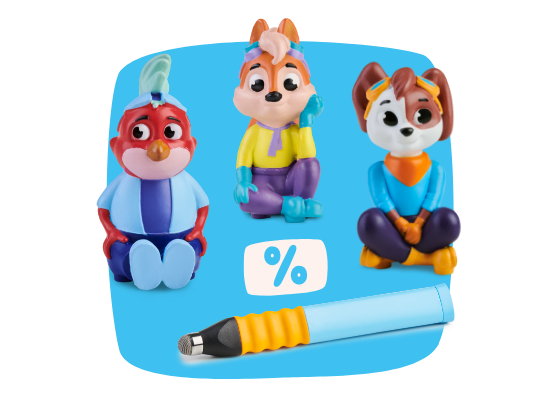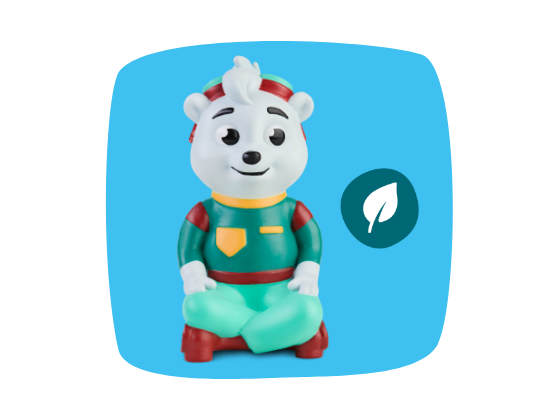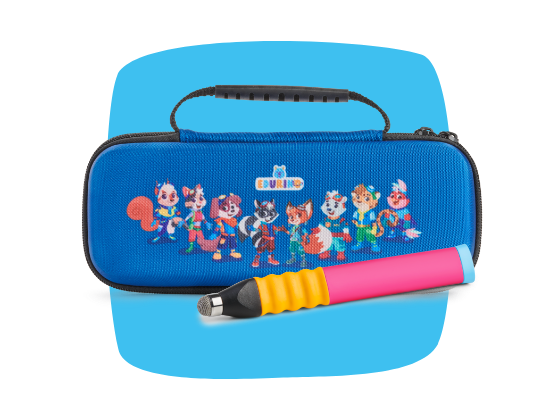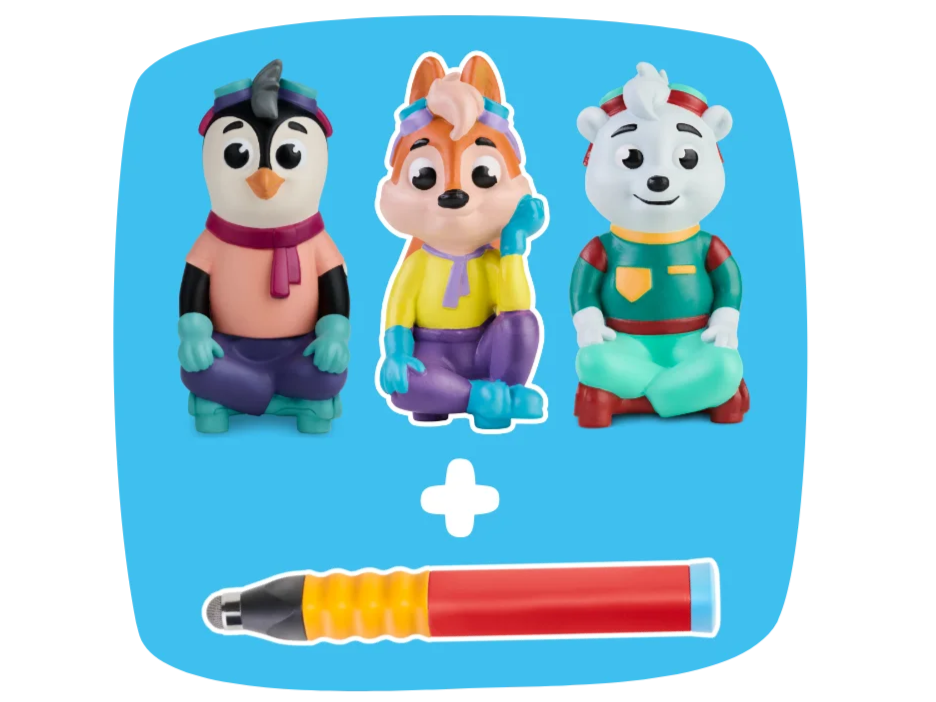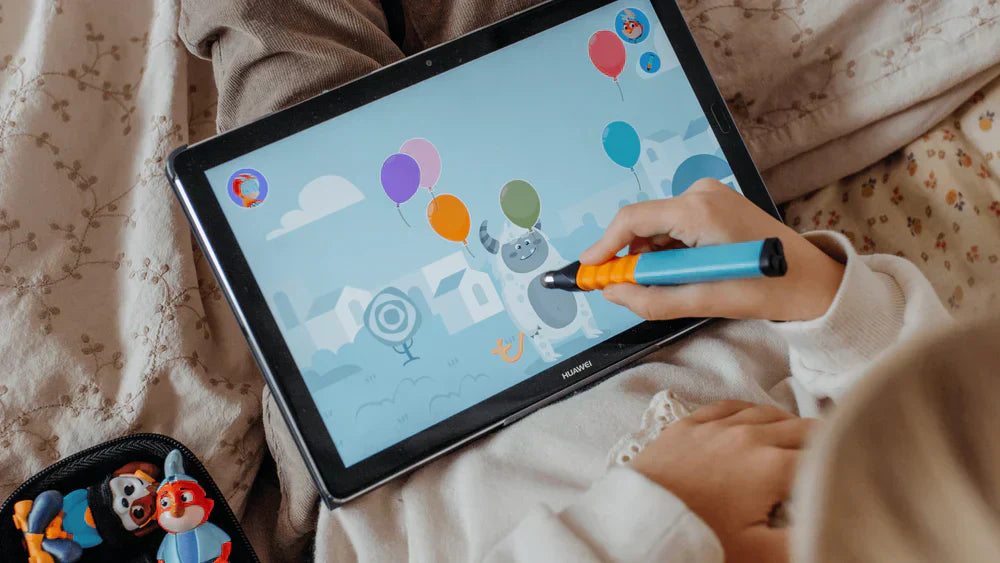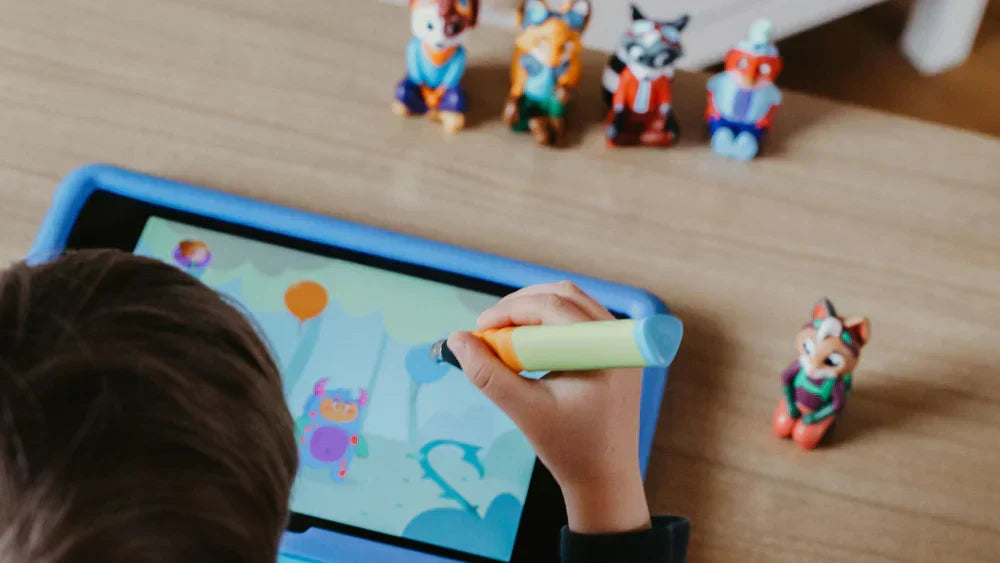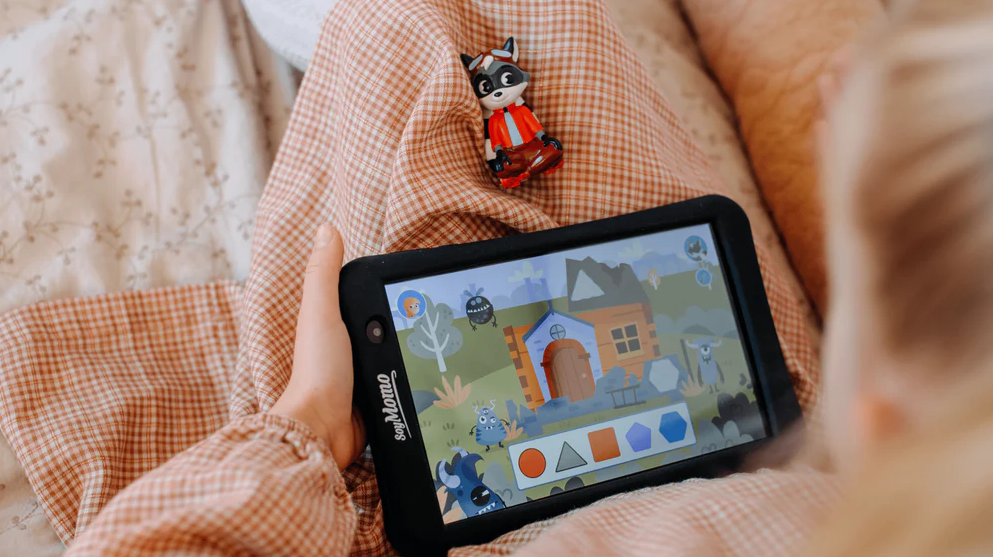The use of digital media has become indispensable in today's world. But how do you choose a good learning app? What aspects should you consider before purchasing one, and what questions should you ask to determine whether the learning game is appropriate for your child? We've compiled the most important decision criteria for you.
What are learning games?
Digital media have become an integral part of our lives. Even elementary schools are increasingly practicing the use of digital media. So, there's no question that digital media is being used. We already discussed how long it should be used in our blog post on optimal media time . However, it's at least as important to monitor what content children are engaging with while using media. We suggest digital learning games for this. As a subcategory of so-called serious games—digital games that aren't primarily intended for entertainment—learning games focus on learning specific content.
Various studies demonstrate why it's so important to be conscious about choosing good learning apps. For example, the media portal jugendschutz.net tested various game apps for children in 2018 and found that 99 out of 100 apps were critical in their approach to child, data, and consumer protection, with over 60% of the apps even exhibiting serious deficiencies.
To ensure safe and successful use of media, we show you as parents what you should pay attention to when purchasing a learning app and what you can personally do to make your children's media time educationally valuable.
Is the learning app age-appropriate?
As we know, not all ages are created equal. Especially in the development of preschool children, various skills in your own child sometimes emerge at a completely different time than in your neighbor's child. That's why it's primarily important to see how far along your child is, what their interests are, and to what extent they can absorb new content. You can also base your choice on various guidelines. For one thing, manufacturers often provide an age recommendation. It would be good to know how the manufacturer justifies this classification. A huge advantage, for example, is if the manufacturer collaborates with various educators and thus obtains external advice on the age recommendation and appropriate content.
Furthermore, individual app stores have their own age rating systems. However, there is no guarantee that these ratings comply with German youth protection regulations. While some app stores declare an official age rating in collaboration with international organizations and associations such as the IARC (International Association for Age Rating), even these cannot guarantee whether the apps are suitable for children or their developmental age. They merely inform you that the game is generally acceptable from the perspective of the respective youth protection regulations.
App rating portals operate in a similar way, allowing you to filter your selection by app type, subject area, and age. The German Youth Institute in Munich has rated over 500 learning apps and games for their educational value in its "Apps for Children" database . There are also other platforms that offer guidance in selecting suitable children's apps.
A good way to determine whether a learning app is appropriate for your child's developmental level is to try it out yourself. So, before you rely entirely on other people's recommendations, it's worth playing through the app yourself and checking/seeing whether the tasks match your child's knowledge level. It's important that your child is neither under- nor over-challenged, so that the game can build on their previous knowledge while still learning new things.
Is the content of the learning app appropriate?
In addition to the appropriate age, factors such as difficulty and time also determine the appropriateness of the app for your child. The latter can be the case if, for example, the manufacturer offers different difficulty settings or if a noticeable increase in complexity is evident with each level. Furthermore, it is definitely important that you can set the time when playing the game. Different media time is recommended for different ages, as we previously reported here . Therefore, it is a good indicator if the user can set the time in advance. Another important element in assessing appropriateness is the didactic concept behind the educational game. Ideally, the manufacturer has integrated this into their app so that you can read and review it as appropriate for each level and game. If this is not the case, it is definitely worth asking yourself the following questions:
What learning goal does the app pursue with its games? Is it intended for children to learn certain techniques, delve deeper into a particular topic, or, for example, become more familiar with the use of the medium? Furthermore, it's useful to ask yourself what the exact function of the games is? Are they intended to convey information, serve as entertainment, or even serve as a tool for designing your own product? And if the games pursue multiple functions, how do you prioritize them?
Ideally, you can answer all of these questions for yourself before purchasing the app, for example, through a demo version, a recommendation, or the manufacturer's instructions. However, if you want to be sure, it's definitely worth trying out the app yourself and determining whether it's specifically suited for your child. Since every child has a different developmental stage, it's ultimately up to you to determine whether the respective game app is appropriate for your child, whether the learning content builds on the child's prior knowledge, and whether the app will be too challenging or too demanding for the child.

